Completion of my collection - Day 4
- Brian Belmont

- Apr 26, 2020
- 4 min read
Updated: Apr 29, 2020
October 2, 2018
I was up again way too late, after 1 AM but still up at 8 AM for my 9 o’clock pick up. I was out in front of hotel Europa and met up with John, who will be joining me for today’s journey. Soon Dennis pulled up and we were headed west to an exciting land of Belarusian castles.
We made our introductions and then headed to the morning traffic of Minsk, and out to the highway. It was pretty straight shot from Minsk heading west. About an hour and a half to reach the first Destination of Nesvizh.

Before 1945 the complex was in Poland and was considered one of the most beautiful Polish castles. Bit this is the story behind it. In 1533, with the extinction of the kizyka family, I was awarded to the Radziwiłłs, one of the most important and wealthy clans of the Crown of the Kingdom of Poland, it was there that the Lithuanian Archive was moved in 1551. In 1586 the estate was turned into a trust which could not be sold.
In 1582 Raziwill started the construction of an imposing square three-story chateau. Although the works were based on a pre-existing structure of a medieval castle, the former fortifications were entirely turned into a renaissance-baroque house. Construction was completed by 1604, and they added several galleries half a century later. The château's corners were fortified with four octagonal towers.
In 1706, during the Great Northern War, Charles XII's army sacked the castle and destroyed its fortifications. Several decades later, the Radziwiłłs invited some German and Italian architects to substantially renovate and enlarge the castle. It’s yellow facades were decorated with baroque stucco work. The 16th-century castle gates were also reconstructed, and the two-story gatehouse tower was crowned with a helm. It was at this time that the three separate buildings surrounding the central courtyard were joined into a single structure.
In 1772, following the third and last partition of Poland, the castle was seized by Russian forces and the Radziwiłł family was expelled. Soon afterwards the Lithuanian Archive was transferred to Saint Petersburg (where it still remains today). Abandoned both by the original owners and by the Russian army, the palace gradually fell into disrepair. However, it was restored by the Radziwiłłs and between 1881 and 1886 the castle's interiors were renovated by Prince Antoni Radziwiłł and his French wife.
During the invasion of Poland in 1939, the Radziwiłł family was expelled from the castle by the Red Army. In Soviet times, the castle was used a sanatorium, while the park gradually fell into neglect. From 2004 to 2012 the palace went through the restoration process of which you see the final results.
The restoration work is certainly on par with many other prominent castles of Western Europe. The ceilings are finally detailed the floor is pristine condition, requiring converse on your shoes, beautiful wallpapers throughout. There are extensive collection of armory glassware and even some unique theatrical devices that I’ve never seen before. I was very impressed with all that I have to see here. I have seen so much that I am not so easily impressed so that is saying a lot. The clouds in the morning had burned off and the sun was high. This made for some amazing pictures of the castle and it’s moat.
It was about a 30 minute drive between the village of Nesvizh and Mir, again on great roads. As we approached we could easily see it’s massive structure. It’s certainly more imposing than Nesvizh, but not as picturesque.
Duke Juryj Ivanavič Illinič began construction of the casgle near the village of Mir after the turn of the 16th century in the Belarusian Gothic style. Five towers surrounded the courtyard of the citadel, the walls of which formed a square of (246 ft) on each side. In 1568, when the Ilyinich dynasty died out, the Mir Castle passed into the hands of Mikołaj Krzysztof "the Orphan" Radziwiłł, who refitted it with a two-winged, three-story stately residence along the eastern and northern inner walls of the castle. Plastered facades were decorated with limestone portals, plates, balconies and porches in the Renaissance style.
In 1817, after the castle had been abandoned for nearly a century and had suffered severe damage in the Battle of Mir in 1812, owner Dominik Hieronim Radziwiłł died of battle injuries and the castle passed to his daughter Stefania. Later the castle became a possession of their daughter Maria.
Their son sold the castle to a noble of the Bialynia clan, in 1895. They began to rebuild the castle. The Sviatapolk-Mirski family owned the castle until 1939, when the Soviet Union occupied eastern Poland.
When German forces invaded the Soviet Union in 1941, they occupied the castle and converted it to a ghetto for the local Jewish population, prior to their liquidation. Between 1944 and 1956, the castle was used as a housing facility, resulting in damage to the castle's interior.
Others names are quite important to the story which is why am sharing them… I know it’s a lot.
Much of the castle is simply restored but it does have many of the walkways that you do not see restored on a lot of castles. I applaud them for that. I do like that the stairs in the towers are fairly original with only minor modifications. They are very very difficult to climb, Sometimes requiring getting on your hands and knees to get up them. That’s part of the fun of it sometimes, ha ha.
An interesting fact is that at some point the tartars had conquered. I did not realize that they had come this far north. I know that they had been paid, employees, of the Ottomans and come further north into Europe but I did not know that they had conquered parts of Belarus,
A short stop in the gift shop revealed treasure of a ceramic Mir Tower...what a find that was. I was smiling ear to ear.
Just across the highway from the castle was a little cafe and we were both a bit hungry. I had come local wine and zuchinni pancakes. They were amazing, very fresh and light. I did find the last page of the menu quite funny. I've never soon paper towels, toilet paper, and yes...comdoms on a cafe menu. Wow...the world is a magical and humerous place.
The day had been all I wanted and then so much more. All the stress of Spain and Andorra had disappeared and I was in Medieval Belarus. What a rich country, and there was more to see.
Tomorrow...art of Belarus.





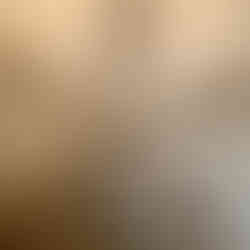




























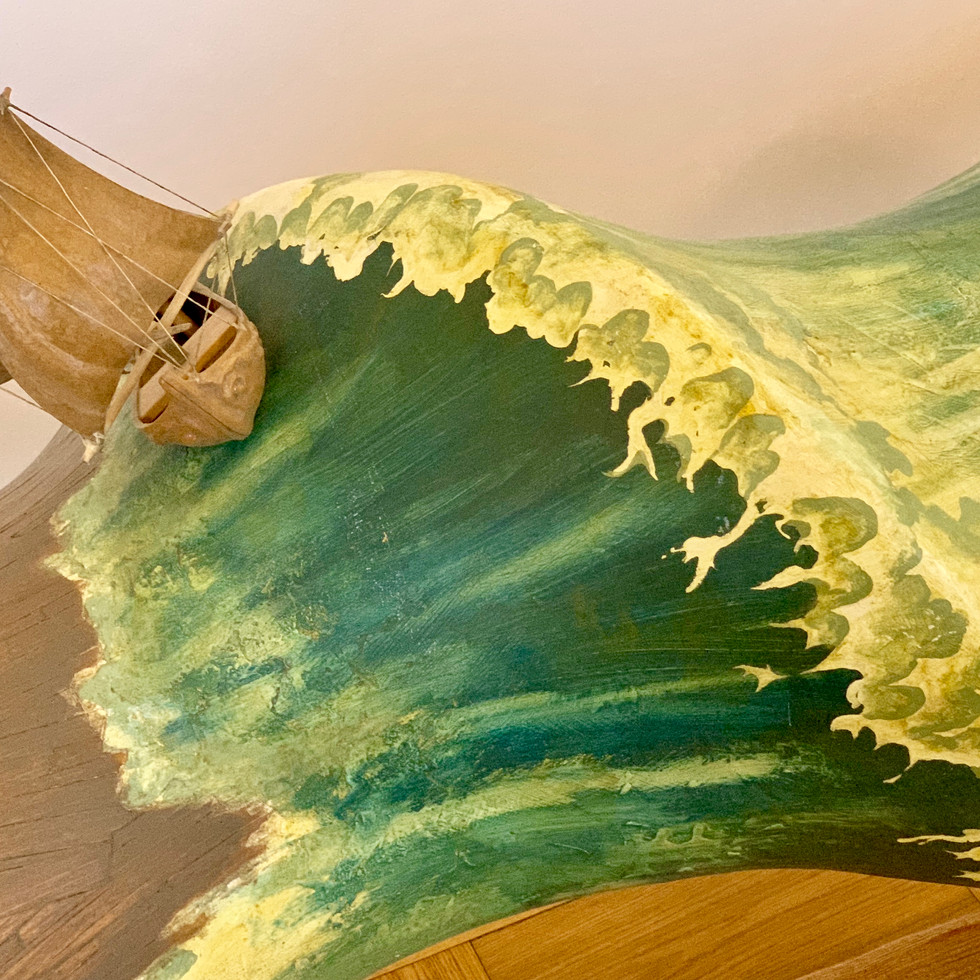



























































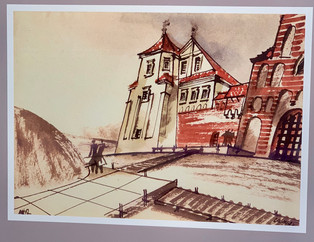















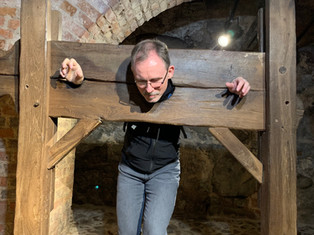



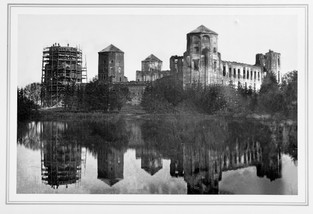













Comments